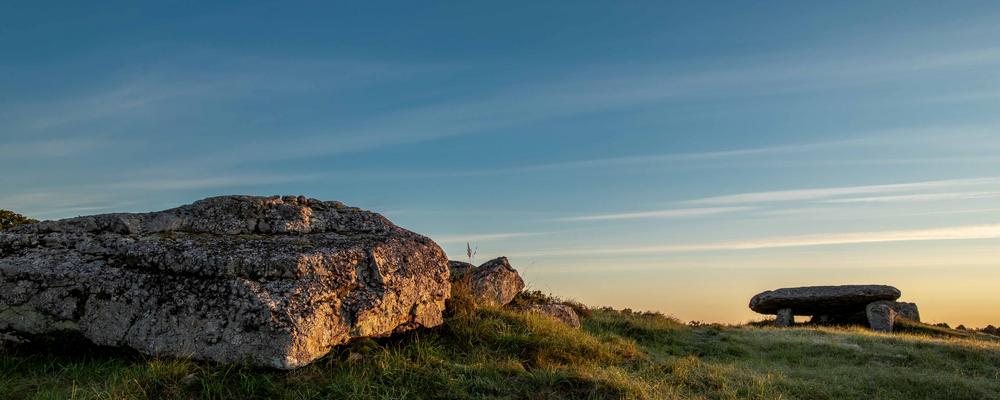The main objective of this thesis is to gain new knowledge of the Neolithic and Early Bronze Age societies constructing and using megalithic graves in inland southwestern Sweden. The aim is addressed with an interdisciplinary approach, combining archaeological, osteological, radiocarbon, Sr isotope, and stable isotope data, genetic sex assessment and mtDNA haplogroup determination. The thesis encompasses four themes: the use-time of megalithic graves, mobility and exchange networks, diet and subsistence practices, and mortuary practices. This research mainly focuses on the skeletal remains, even though grave architecture and artefacts are also part of the investigations. The megalithic graves and the material recovered from them are used as a source for understanding individual life stories and the past living societies.
Falbygden is the study area
The main study area is Falbygden, located in the southwestern Swedish region of Västergötland. Falbygden has one of northern Europe’s largest concentrations of passage graves, along with many gallery graves. The clear spatial structure of the geology and the well-preserved human and animal bone material make it an unusually fruitful study area for investigations combining bioarchaeological and archaeological methods to understand prehistoric economy and society.
This thesis relies on a vast range of source material from Falbygden and the surrounding area of Västergötland. For this study, 61 water sources and five archaeological animal remains were sampled for baseline Sr isotope analyses. Nine domestic animal bones from five megalithic graves and one settlement were analysed for radiocarbon dating, and stable isotopes. ZooMS were performed on six of these samples. Furthermore, 221 human remains from 47 megalithic graves and one wetland deposit were sampled for dating and isotope analyses, and some of these for genetic sex assessment and mtDNA.
Important results
The most important results are that the megalithic chamber forms are more varied than previously thought and that in some cases, Late Neolithic gallery graves can be difficult to separate from Early/Middle Neolithic megalithic graves. The construction and burial use of the megalithic graves appear in two phases, ca. 3500 to 2600 cal BC and ca. 2200 to 1100 cal BC. The two phases are separated by a time of disuse, which corresponds to the Battle Axe Culture period. The data acquired within this thesis demonstrate a distinct increase in human mobility and genetic diversity in the late use-phase compared to the early phase. The mobility in the early phase seems to be dominated by adults moving into the area, while in the later phase, mobility also involves migrations of groups, perhaps families with children. Furthermore, movements of artefacts, cattle and humans seem to have been part of different, only partly overlapping networks. No clear indications of a more stratified society or intensified agriculture could be observed in the Late Neolithic material from Falbygden. Instead, the results point to a less regulated and ritualized society, with more extensive farming and more varied agropastoral strategies in the Late Neolithic and Early Bronze Age, compared to the earlier phase.
Keywords
megalithic graves, burial sequences, mobility, exchange networks, subsistence, diet, mortuary practices, Falbygden, southwestern Sweden, Neolithic, Early Bronze Age, stable isotopes, strontium isotopes, radiocarbon dates, interdisciplinary study.
Examining committee:
Principal Research Scientist, Jane Evans, British Geological Survey Försteamanuensis, Steinar Solheim, Universitetet i Oslo
Professor, Helle Vandkilde, Aarhus University
Substitute in case of hindrance for a member of the grading committee is :
Docent, Anders Gustafsson, University of Gothenburg
Opponent:
Opponent: Jan Apel, Stockholm University.
Chair person:
Docent Karl-Göran Sjögren, University of Gothenburg
